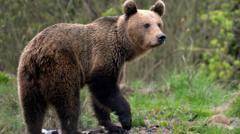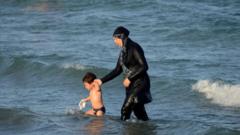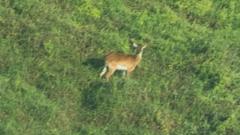Authorities emphasize the need for better regulations and public awareness regarding bear encounters in Romania.
**Bear Attack Claims Life of Motorcyclist in Romania's Mountains**

**Bear Attack Claims Life of Motorcyclist in Romania's Mountains**
A tragic incident occurs as a bear attacks a motorcyclist in the Transfagarasan area, raising concerns about wildlife management.
In a devastating incident in Romania's picturesque Transfagarasan mountains, a motorcyclist has lost his life after being attacked by a bear. The event unfolded on Tuesday morning when the victim halted at a popular tourist spot along the scenic road. Eyewitness accounts reveal that the bear dragged the man down a steep ravine, resulting in fatal injuries. Ion Sanduloiu, the head of the Arges County Mountain Rescue Service, confirmed that the victim was pronounced dead upon rescue team's arrival, despite wearing a helmet and protective gear.
Sanduloiu advised future travelers against stopping near bear habitats, especially emphasizing that individuals should not feed wildlife and must maintain a safe distance. As of now, the bear involved in this tragic encounter has not yet been euthanized, and investigations into the circumstances of the attack continue.
Romania boasts the largest population of brown bears within the European Union, with recent estimates projecting numbers between 10,400 and 12,800 bears. This rise in the population has led to an uptick in human-bear interactions, raising alarms over safety and prompting discussions about stricter regulatory measures. Former environment minister Mircea Fechet suggests that the sustainable population should be capped at around 4,000 bears, coining the need for local authorities to take immediate action when bears encroach into human settlements.
In contrast, wildlife conservationists argue that the incident is a symptom of larger management issues rather than sheer population density. Gabriel Paun, founder of the environmental organization Agent Green, pointed out repeated failures to adequately manage wildlife encounters, an increase in illegal hunting, and insufficient government actions to promote a coexistence strategy between humans and wildlife.
Sanduloiu advocates for stricter penalties to deter individuals from feeding bears, arguing that the implementation of higher fines and possible prison sentences for offenders could significantly curtail these dangerous scenarios. The debate surrounding wildlife conservation safety and appropriate human interactions continues, as both authorities and activists grapple with the urgent need for effective strategies.
Sanduloiu advised future travelers against stopping near bear habitats, especially emphasizing that individuals should not feed wildlife and must maintain a safe distance. As of now, the bear involved in this tragic encounter has not yet been euthanized, and investigations into the circumstances of the attack continue.
Romania boasts the largest population of brown bears within the European Union, with recent estimates projecting numbers between 10,400 and 12,800 bears. This rise in the population has led to an uptick in human-bear interactions, raising alarms over safety and prompting discussions about stricter regulatory measures. Former environment minister Mircea Fechet suggests that the sustainable population should be capped at around 4,000 bears, coining the need for local authorities to take immediate action when bears encroach into human settlements.
In contrast, wildlife conservationists argue that the incident is a symptom of larger management issues rather than sheer population density. Gabriel Paun, founder of the environmental organization Agent Green, pointed out repeated failures to adequately manage wildlife encounters, an increase in illegal hunting, and insufficient government actions to promote a coexistence strategy between humans and wildlife.
Sanduloiu advocates for stricter penalties to deter individuals from feeding bears, arguing that the implementation of higher fines and possible prison sentences for offenders could significantly curtail these dangerous scenarios. The debate surrounding wildlife conservation safety and appropriate human interactions continues, as both authorities and activists grapple with the urgent need for effective strategies.





















